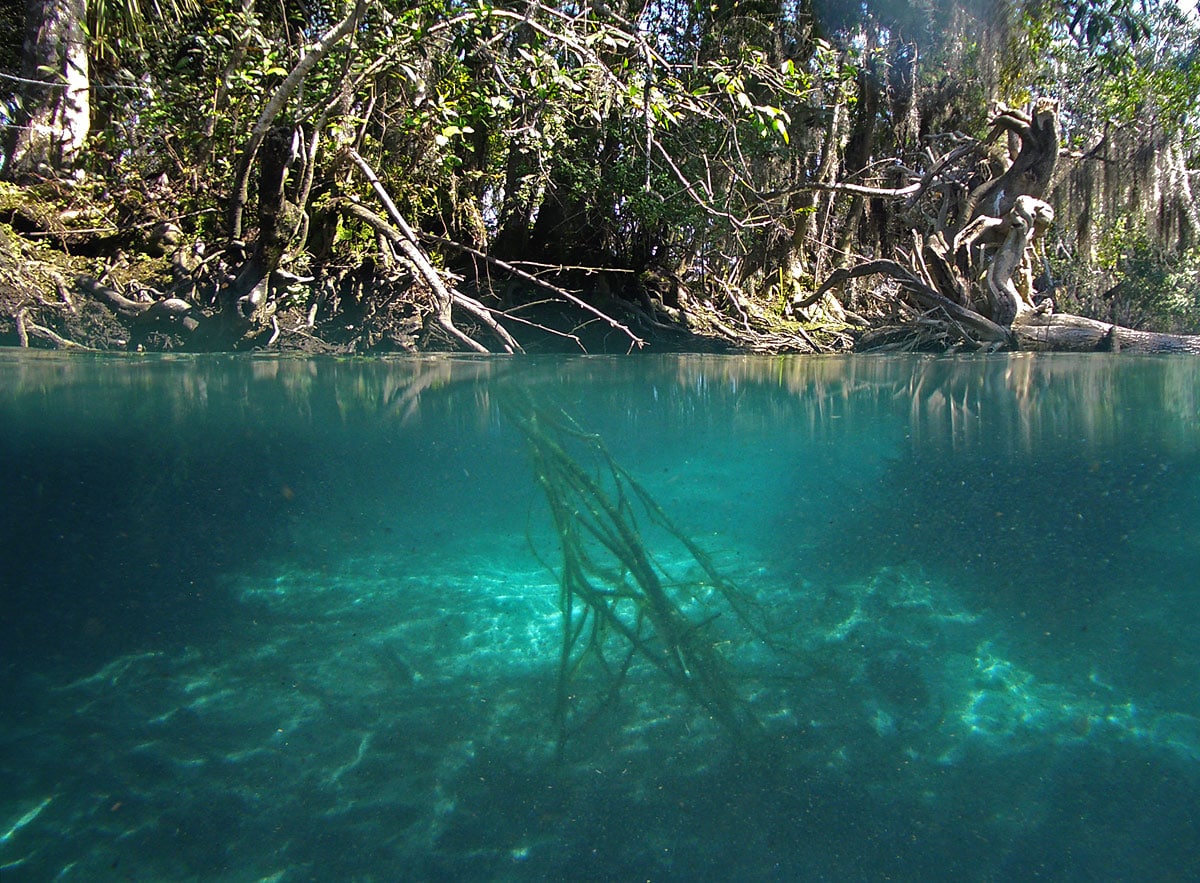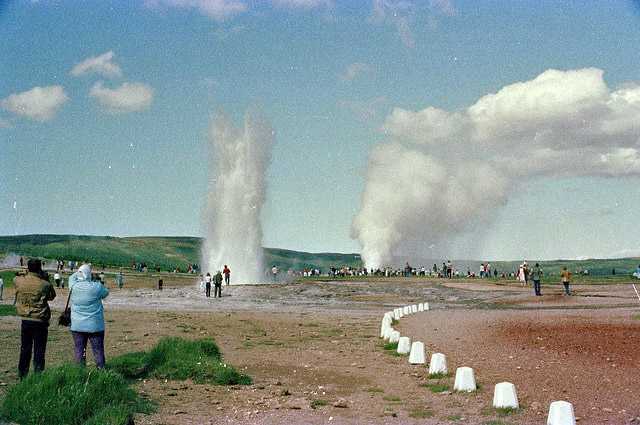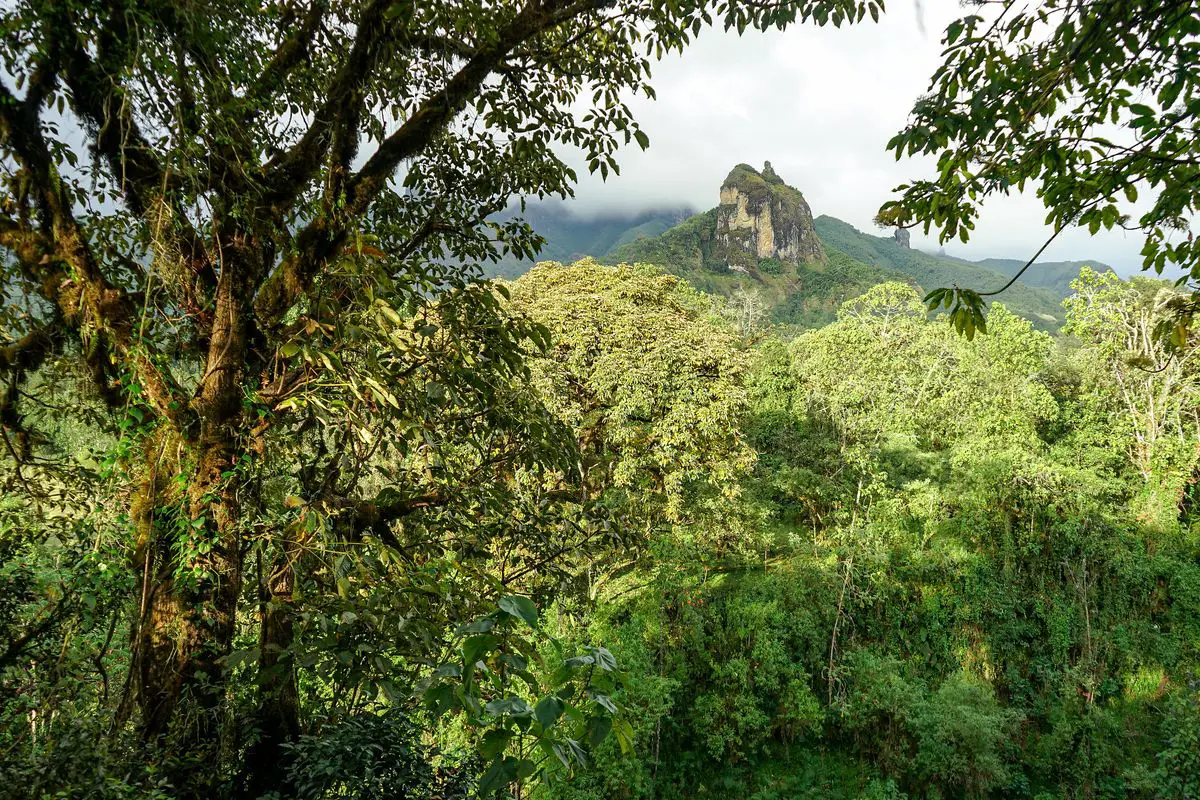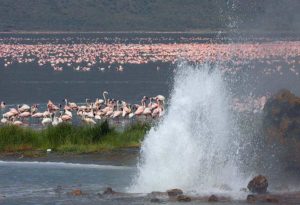Thermal springs 🢔 Springs 🢔 Geological wonders 🢔 Categories of wonders
Wonder
Geyser of Edo Laki Island, Langano Lake
 In short
In short
In the northern part of Langano Lake is located a deep, round bay with an island in the center. This island has different names – Edo Laki, O’a and also Geyser Island. For several decades here was located impressive geyser, which now has disappeared.
 28.5%
28.5%
GPS coordinates
Alternate names
Map of the site
If you see this after your page is loaded completely, leafletJS files are missing.
 In detail
In detail
This geyser formed in 1906, after an earthquake. There are several hot springs on Edo Laki Island – and one of them started a furious activity. Approximately two times per minute the water from this spring burst high up in the air. Bursts lasted just a few seconds but the fountain was 25 – 30 m high.
As time went by, geyser became less powerful. In 1926 the height of the geyser was just 1 m and it burst just once per (approximately) 30 minutes. There is a contradicting report from 1963 – 1964, which reports that geyser was 2 m high then.
In 1965 in the site of the geyser was a circular basin with a diameter of 2 m. Water in this basin fluctuated by 5 – 10 cm every 9 – 10 minutes. In 1970 even this surge was not noticeable.
Today here is located very hot spring with the temperature of water 96°C. Water is alkaline, with pH 8.36.
References
- Pierre Gouin. Earthquake History of Ethiopia and the Horn of Africa. 1979, Ottawa.
Geyser of Edo Laki Island is included in the following article:
 Linked articles
Linked articles

Springs
Powerful natural freshwater springs belong to the most fascinating monuments of nature. Even more exciting is the diversity of unusual springs – mineral springs, hot springs, submarine springs as well as the unusual black smokers. Especially beautiful are such natural rarities as travertine, silica, or salt terraces created by warm and hot springs and, especially, geysers.

Geysers
Hasty hydrogeologists would say: geysers are thermodynamically and hydrodynamically unstable hot springs. “Normal” people would say – geysers are hot springs that at more or less regular intervals shoot up a fountain of boiling water and steam. Sometimes these fountains are even 100 m tall… or even 450 m!

Wonders of Ethiopia
Ethiopia is a very interesting country with a rich cultural and natural heritage. Highlights of Ethiopian heritage are its rock-cut churches, ancient stelae, and megaliths as well as places, where are found some of the oldest hominins and humans in the world.
 Recommended books
Recommended books
Landscapes and Landforms of Ethiopia
This book provides a succinct but comprehensive presentation of key geomorphological locations and topics including information about geomorphological heritage and maps to visit the most important sites.
Ethiopia
The bestselling guide to Ethiopia in recent years, this fully updated seventh edition of Philip Briggs’ acclaimed guide reveals an ancient country that continues to surpass all expectations: from the ancient Judaic cultures of the fertile highlands to the Animist people of the South Omo Valley, from the Afroalpine moorland of the Bale Mountains National Park to the thundering Blue Nile Falls.



